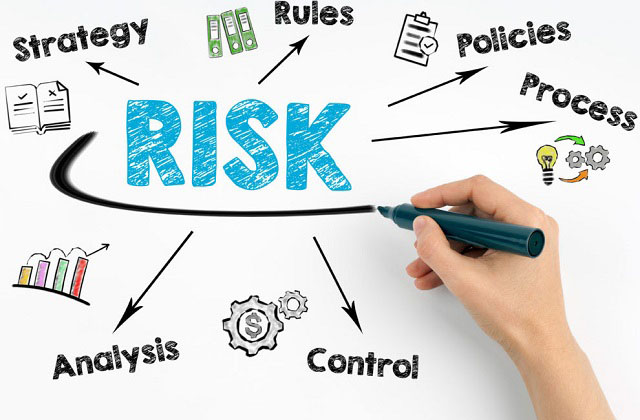With the rapid changes in today’s world, risks are constantly lurking and ready to disrupt businesses in a short period. Therefore, risk management is one of the critical issues garnering a lot of attention from businesses at present. So, what is risk management? What role does it play? And what is the risk management process like? The following article will shed light on these questions.
1. What is Risk Management?
Risk management is a systematic and scientific approach to risk that helps businesses identify, analyze, measure, and evaluate risks. This process allows businesses to identify control measures, mitigate the consequences of risks on their operations, minimize losses, and potentially turn risks into opportunities for success.
2. Benefits of Risk Management for Businesses
a. Minimizing wasteful investment spending
Risk management enables businesses to gain an overview of their investments and business activities. Consequently, it helps identify incurred costs during investment processes and business development activities. Thus, effective risk management can reduce waste and unnecessary costs.
b. Effective tool for investment and business development
A business with successful risk management holds a useful and efficient tool not only to preserve its value but also to create new values, revenue streams, and successful projects.
c. Enhancing business management
Managing potential risks provides essential information to business managers, guiding them on directions and measures to avoid or confront future challenges. This helps businesses ensure sustainable operations and continually enhance values such as financial performance, market share, and brand.
d. Achieving set objectives
Anticipating potential risks supports management in improving operational efficiency, reducing revenue losses, and avoiding passive situations.
Additionally, building a management system helps businesses effectively cope with objective changes in the business environment, potentially turning risks into competitive advantages.
e. Meeting investor expectations
Some businesses may need to disclose their risk management capabilities to investors to assess the correlation between potential profits and risks.
Businesses with good risk management, capable of foreseeing future challenges and implementing effective responses, will attract more investors.

3. The 6 Steps of the Risk Management Process
Risk management comprises six main steps: Context establishment, risk identification, risk analysis, risk evaluation, risk treatment, and risk monitoring. Let’s delve into each step:
Step 1: Context Establishment
This is the initial step businesses must undertake in their risk management process. Organizations must identify their current context, establish criteria to evaluate potential risks, and define their analysis structure.
Step 2: Risk Identification
Next, organizations need to identify potential risks that could affect their business operations or specific projects.
Step 3: Risk Analysis
After identifying potential risks, management needs to analyze the likelihood and impact of each risk. The goal here is to gain a clearer understanding of specific risk scenarios and their potential consequences for business projects or objectives.
Step 4: Risk Evaluation
Upon completing the analysis, businesses will assess the likelihood and consequences of each risk, enabling them to prioritize risks accordingly. This allows businesses to decide how to confront or avoid these risks.
Step 5: Risk Treatment and Response
After evaluating and prioritizing potential risks, businesses will develop a plan to minimize these risks using specific measures such as risk reduction procedures, risk prevention strategies, and contingency plans.
Step 6: Risk Monitoring
Risk management is an ongoing process that doesn’t end once risks are identified and mitigated. Accurate and strategic risk management plans need annual reviews to ensure they remain updated and relevant for each stage of the company’s growth.
2. Considerations in Business Risk Management
Before businesses commence implementing a risk management system, managers should consider the following points to take the best possible actions:
a. Past events cannot definitively determine current risk management.
Businesses often make the mistake of relying on past research outcomes to decide present actions. Such decisions should be based on comparing past events with the present rather than solely on historical research. Research indicates that past events could reoccur under similar conditions, but they don’t necessarily have the same consequences or resolutions.
b. Risk responses are continuously variable
In reality, risks are continually changing and evolving. Thus, risk management plans require continuous updates to remain relevant to the times.
c. Pay attention to “should nots” and avoid excessive focus on “shoulds”
Advice on what not to do often proves more practical than advice on what to do. Human trends tend to downplay negative warnings, leading companies to be susceptible to unnecessary risks without adequate plans to face these risks.
In summary, risk management provides the groundwork for accurate, effective decision-making to help businesses confront internal and external risks. To sustainably grow in today’s fast-paced world, gather relevant departments within your company to establish a risk management plan. This not only aids your business in navigating challenges efficiently but also demonstrates high-level determination and gains unanimous support from all company employees.








